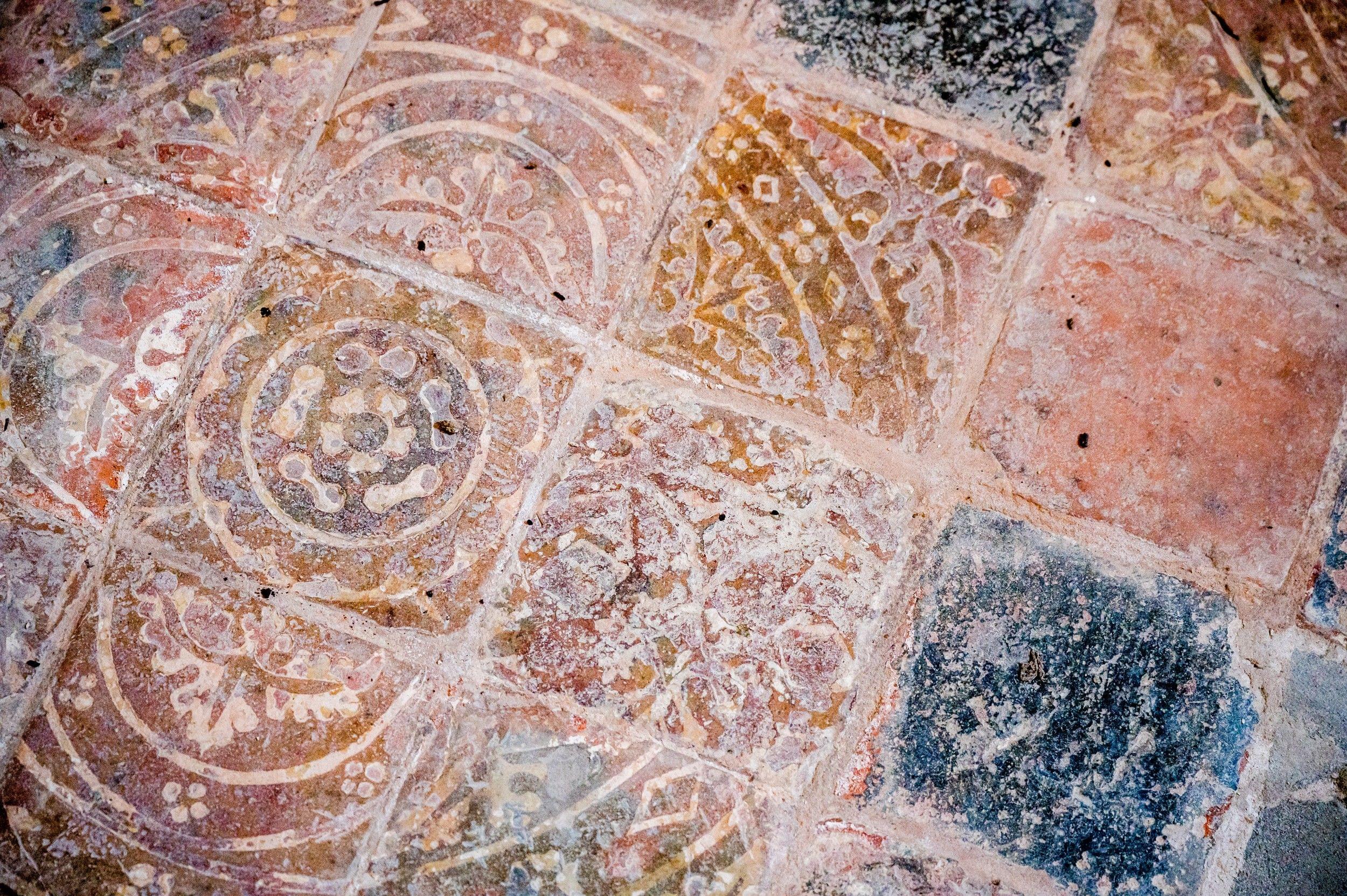St Mark the Evangelist
Hadlow Down, Sussex
St Mark’s Hadlow Down was consecrated in 1836, and rebuilt just before the First World War.

This historic hilltop village in the High Weald lies close to the source of the Rother, the Sussex river from which it takes its name.
Rotherfield, Sussex
Rotherfield was an important hub of iron industry, which flourished here for nearly 500 years until the Industrial Revolution, bringing prosperity that accounts for many of its handsome old houses.
The large sandstone church has a very long story and is full of interest, with features from almost every period.
The ancient yew tree in the churchyard is said to predate the 8th century wooden church that once stood here. The north east corner of the present building incorporates the first stone church, of 1060, with some of its distinctive Saxon masonry still visible on the outside.
It later became the Nevill Chapel: the Nevill family were lords of the manor of Rotherfield from 1450, and their coat of arms appears on one of the roof bosses and also on the elaborately carved oak font cover, made in 1533. The octagonal late Norman font was recovered from a nearby farm in the late 19th century after being lost for many years.
From the 17th century Rotherfield has a fine pulpit (1632), with a delicately carved tester above, and from the 18th century some remaining box pews. The pre Raphaelite east window of 1878, illustrating the Te Deum, is by Sir Edward Burne-Jones and William Morris.
St Denys is also noted for its wall paintings, especially a 15th century Doom painting above the chancel arch. There are fragments of other medieval paintings elsewhere in the church.
The 15th century battlemented tower houses a peal of eight bells plus a carillon so that chimes can be played by a single ringer, using all eight. The tower is topped by a slender spire, clad with chestnut shingles. This had to be rebuilt after the devastating storm of October 1987. Its new steel framework was lowered in sections from a helicopter. Timbers from the original spire were given a new lease of life: a local craftsman made them into a cross and an altar table, both now in the church.
The original dedication of the church was to St Dionysius, a 3rd century bishop of Paris also known as St Denys or Denis. A statue of him carrying his mitred head in his hands still stands outside the city's cathedral, Notre-Dame. The story of his martyrdom is that after he was beheaded, he picked up his head and continued preaching as he walked to Montmartre.
Hadlow Down, Sussex
St Mark’s Hadlow Down was consecrated in 1836, and rebuilt just before the First World War.
Wadhurst, Sussex
More than 30 cast iron memorials are set into the floor of this medieval church.
Tunbridge Wells, Kent
King Charles the Martyr Church has been an established landmark in Royal Tunbridge Wells for over three centuries, its origins entwined with historic Chalybeate Spring and the Pantiles.